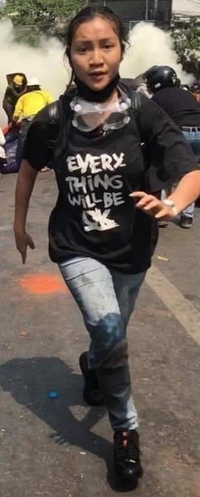- Joined
- Mar 7, 2019
- Messages
- 102,249
- Reaction score
- 34,820
- Points
- 138
- Age
- 29
*NSFW Warning*


[What remained of Komarov following Soyuz 1's crash]
Honestly it's kind of crazy that Komarov died in Yuri Gagarin's place, history could have changed dramatically.

Vladimir Mikhaylovich Komarov (Russian: Владимир Михайлович Комаров, IPA: [vlɐˈdʲimʲɪr mʲɪˈxajləvʲɪtɕ kəmɐˈrof]; 16 March 1927 – 24 April 1967) was a Soviet test pilot, aerospace engineer, and cosmonaut. In October 1964, he commanded Voskhod 1, the first spaceflight to carry more than one crew member. He became the first Soviet cosmonaut to fly in space twice when he was selected as the solo pilot of Soyuz 1, its first crewed test flight. A parachute failure caused his Soyuz capsule to crash into the ground after re-entry on 24 April 1967, making him the first human to die in a space flight.[1]
Komarov was selected to command the Soyuz 1, in 1967, with [Yuri] Gagarin as his backup cosmonaut. During the preparations for the spaceflight, both cosmonauts were working twelve- to fourteen-hour days. On orbital insertion, the solar panels of the Soyuz module failed to fully deploy thereby preventing the craft from being fully powered and obscuring some of the navigation equipment. Komarov reported: "Conditions are poor. The cabin parameters are normal, but the left solar panel didn't deploy. The electrical bus is at only 13 to 14 amperes. The HF (high frequency) communications are not working. I cannot orient the spacecraft to the sun. I tried orienting the spacecraft manually using the DO-1 orientation engines, but the pressure remaining on the DO-1 has gone down to 180."[27] Komarov tried unsuccessfully to orient the Soyuz module for five hours. The craft was transmitting unreliable status information, and lost communications on orbits 13 through 15 due to the failure of the high frequency transmitter that should have maintained radio contact while the craft was out of range of the ultra high frequency (UHF) ground receivers.[27]
As a result of the problems with the craft, the Soviets did not launch the second Soyuz module, from which cosmonauts were to perform an extra-vehicular activity (EVA) to the Soyuz 1, and cut the mission short.
Komarov was ordered to re-orient the craft using the ion flow sensors on orbits 15 to 17. The ion sensors failed. Komarov did not have enough time to attempt a manual re-entry until orbit 19. Manual orientation relied on using the equipped Vzor periscope device, but to do this, Komarov had to be able to see the Sun. To reach the designated landing site at Orsk, the retro-fire had to take place on the night side of the Earth. Komarov oriented the spacecraft manually on the dayside then used the gyro-platform as a reference so that he could orient the craft for a night side retro-fire.[28] He successfully re-entered the Earth's atmosphere on his 19th orbit, but the module's drogue and main braking parachute failed to deploy correctly. The module crashed into the ground, killing Komarov, at 6.24 a.m.
In his diary, Kamanin recorded that the Soyuz 1 capsule crashed into the ground at 30–40 metres per second (98–131 ft/s) and that the remains of Komarov's body were an irregular lump 30 centimetres (12 in) in diameter and 80 centimetres (31 in) long. Three hours after the capsule's crash, Keldysh, Tyulin, Rudenko, and other State Commission members visited the site. At 21:45 Kamanin accompanied Komarov's remains to the Orsk aerodrome, where they were loaded on an Il-18. Ten minutes before departure an An-12 landed with Kuznetsov and several cosmonauts. Kamanin's aircraft arrived in Moscow in the early hours of the next morning. The aircraft had to divert to Sheremetyevo since all the other airfields around Moscow were closed to takeoffs or landings due to weather. Konstantin Vershinin's orders were that Komarov's remains were to be photographed, then immediately cremated so that a state burial in the Kremlin wall could take place.[29] The remains underwent a quick autopsy that morning, then were cremated.[30]

[What remained of Komarov following Soyuz 1's crash]
Honestly it's kind of crazy that Komarov died in Yuri Gagarin's place, history could have changed dramatically.








